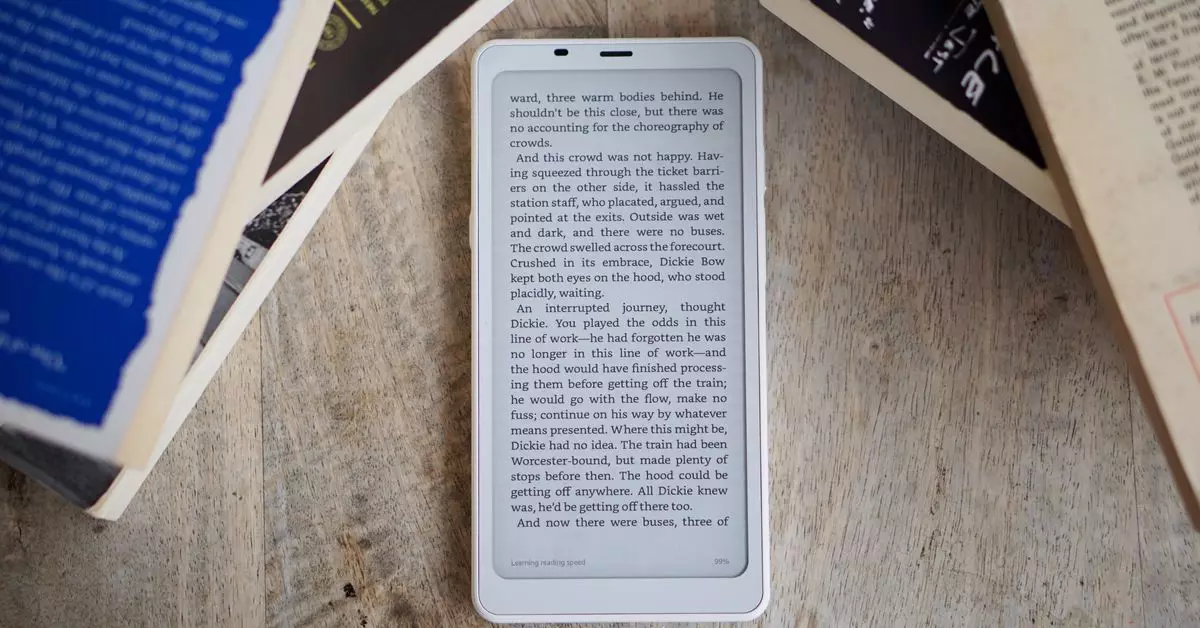The Onyx Boox Palma 2 is a follow-up to its predecessor, the Palma, which has captured the attention of readers looking for a smart, compact e-reading device. With over a year of subsequent development, can we really expect anything new in the Palma 2 that significantly alters the user experience? Let’s dissect the device and understand its compelling strengths and notable weaknesses.
Design and Display: A Helping Hand from Familiarity
At first glance, the Palma 2 doesn’t stray far from what its original model offered. The size, roughly akin to a smartphone, makes it portable yet comfortable enough for prolonged reading sessions. This familiarity could be seen as both a boon and a bane: while users may appreciate the lack of disruptive change, one could argue that it reflects a missed opportunity to innovate in a market craving fresh solutions.
The 6.3-inch E Ink Carta display continues to impress, faithfully delivering crisp text and images that distinguish the Palma series in the e-reader landscape. Even with a legacy of an attractive display, one couldn’t help but wonder how much more the device could achieve in aesthetics and durability with better materials, inviting both readers and tech enthusiasts to question whether cost-cutting was a factor.
Under the hood, the Palma 2 is equipped with a new octa-core processor and runs on Android 13. This change offers a welcome relief from the stagnant performance of its predecessor. On the surface, these specifications should translate to snappier performance, yet in practical application, the performance gains feel more incremental than revolutionary. The rate of app launch and responsiveness still falls short of what users might expect from a modern device, raising concerns about whether this ‘upgrade’ really delivers on its promise.
Scoring the Palma 2 against contemporary devices places it firmly in the midrange category—hardly exceptional compared to the latest smartphones. While benchmark scores show slight improvements over the original model, they still lag when positioned against today’s standards. Users who desire a streamlined device for applications beyond mere reading—such as gaming or video—will find the Palma 2 insufficiently equipped to cater to these needs.
The Palma 2 markets itself as more than an e-reader; it aspires to be a multifunctional device that supports music, podcasts, note-taking, and browsing, all while avoiding the chaos often associated with mobile phones. This vision captures a unique selling proposition, yet one must also acknowledge the limitations embedded within it.
While the device does allow users to access various apps via the Play Store, the sluggish performance denies them the seamless interaction they deserve. In a way, the Palma 2 becomes a jack of all trades and a master of none—many features feel shoehorned into its design without a concerted effort to harmonize them effectively.
Despite needing improvements, the Palma 2’s appeal lies in its minimalist design, allowing users to focus on literature without the distractions prevalent in typical smartphone use. This restraint often leads users to overlook its sluggishness, finding solace instead in an eco-system designed for reading.
Battery Life and Usability: The Expected Consistency
One of the consistent advantages of the Palma series is its battery life, with both models generally lasting four to five days per charge. This endurance aligns well with the device’s purpose of being an accessible reading platform. Moreover, the recent addition of a fingerprint reader for enhanced security adds a touch of sophistication—albeit one that sometimes struggles with speed and reliability.
Nonetheless, minor features, like the 16-megapixel camera, quickly fall short. While it serves some practical purposes like scanning documents, it cannot overcome its poor image quality, reinforcing the idea that the Palma 2 is not designed for versatile media consumption.
The Onyx Boox Palma 2 stands as a testament to the adage “if it isn’t broken, don’t fix it.” However, this approach also raises questions about stagnation versus evolution within the tech landscape. The Palma 2 delivers a gratifying reading experience, gently closing off distractions while offering basic multi-functionality. Yet, it remains shackled by its performance and practicality limitations.
For prospective buyers, if the original Palma already satisfies your needs, the Palma 2 might not be essential. Yet for newcomers eager for an uncomplicated e-reading gadget, it offers a reliable choice—albeit an unfulfilled promise of innovation. Until someone rises to challenge Onyx in truly enhancing this concept of an all-in-one E Ink device, the Palma 2 will continue to serve its purpose without pushing the envelope.

